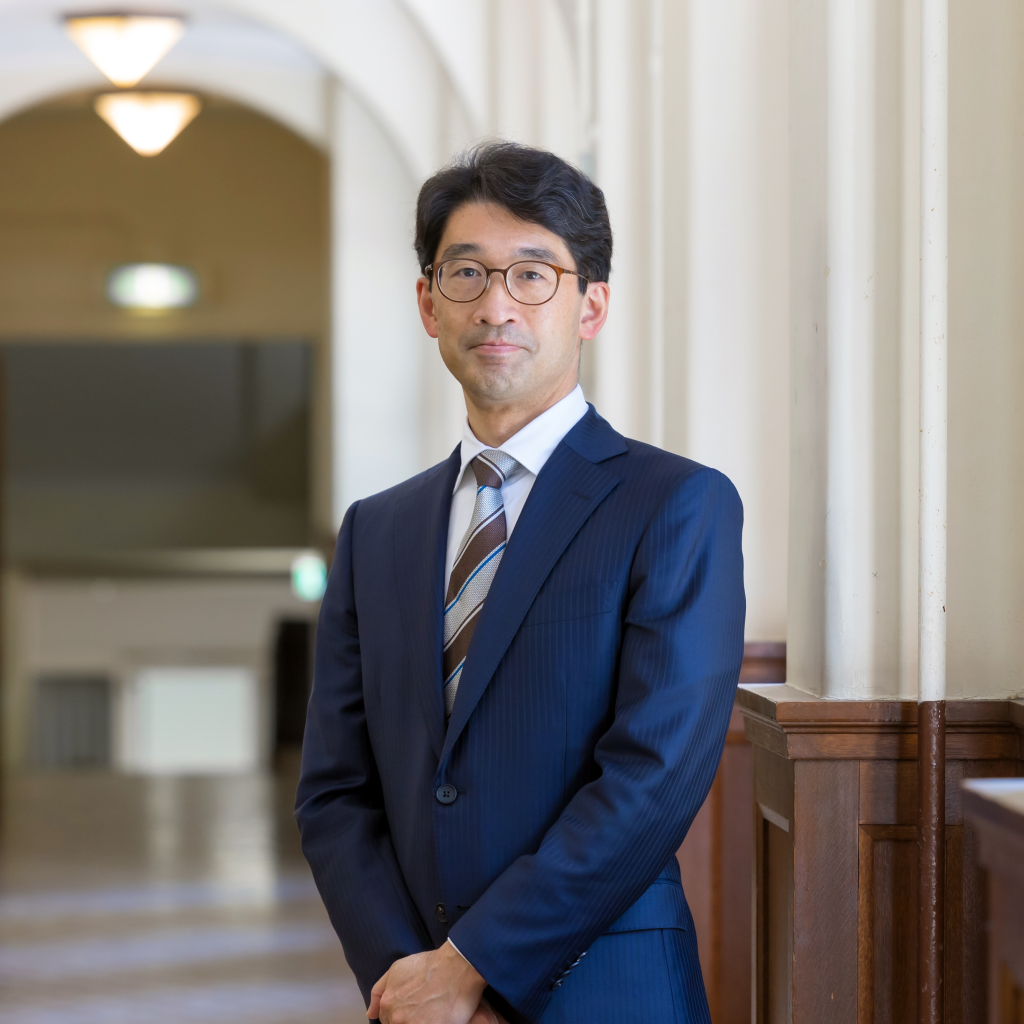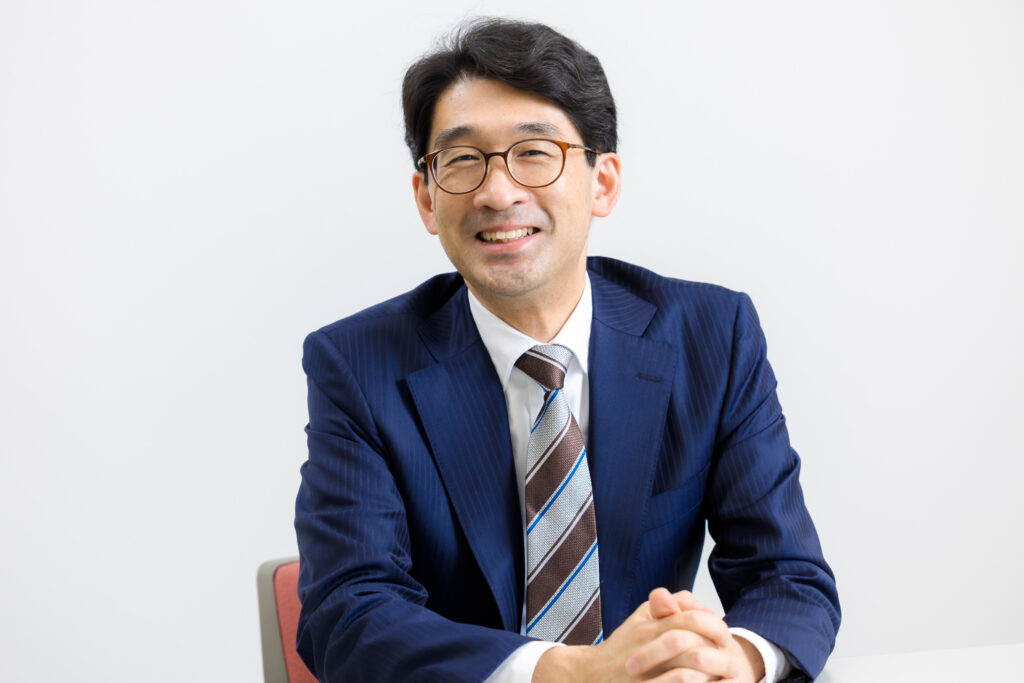
Specializing in information and communication technology, Professor Tomoharu Shibuya of the Faculty of Science and Technology researches information security. He is currently working on cutting-edge technology known as “secure computation”, which can compute data while it is encrypted. Here he talks about how this advanced research is playing a useful role in today’s society.
Recently, in our digital society, there have been some astonishing developments in the area of information and communication technology. Specializing in this field, my research focuses on encryption technology and other technologies related to information security.
This encryption technology is constantly at work inside the smartphones we use every day. Take for example the moment you open your browser to shop online: This entire exchange of information is performed in an encrypted form, in order to hide the content of the data from others. Although the general user is largely unaware of it, this technology has become crucial in securing the convenient lifestyles we have grown to live.
Now, data encrypted on a communication network cannot be used in computation and so forth unless it is first restored to a state in which anyone can read it. But this poses a security risk. Therefore, I am focusing my efforts on research into secure computation, a technology that enables computation while keeping data encrypted.
Can data be analyzed in an encrypted state?

Imagine, for example, that you want to develop a new drug, or a new method of treatment. If we can collect as much medical data on patients as possible from hospitals all over Japan, and then use machine learning to discover a pattern within that vast data set, we may find a clue for discovering the new drug. However, medical records contain a lot of personal information. Considering the need to protect privacy, gathering data in one place and analyzing them with machine learning algorithms is not feasible.
So, the way to solve this problem is to encrypt all the data in the medical records—the patients’ addresses, family histories, medical histories, and so on—in order to prevent those data from being leaked. The machine learning is then carried out while the data are encrypted. Secure computation is the technology that makes this dream-like vision come true.
With this technology, it is possible to perform computational tasks such as data analysis while protecting any data relating to personal information or trade secrets. This technology is commanding the attention of many companies and research institutes around the world, most notably Google, and research is underway to bring it into commercial use. With awareness of data security on the rise, in the coming years, these encryption technologies are likely to play an increasingly important role.
Being able to convey our advanced research is also important
One area of security that has become more familiar is biometric authentication, which is used to log into devices such as computers and smartphones. Biometric authentication that uses information such as fingerprints or faces may seem secure because this kind of information is user-specific, but the problem here is that, unlike your pin code, your biometric information cannot be changed. This means that once your biometric authentication details have been leaked, there is no way to stop other related information from being leaked too—which is extremely risky. Can we trust that the person who is performing the authentication is really who they say they are? There is a lot of room for improvement here.
Encryption technology, such as secure computation and biometric authentication, are underpinned by mathematical theory. Prime factorization is deeply involved, and the encryption mechanism is established by using Euler’s theorem and other famous theorems. The new technologies of the future will also emerge from ideas that cast light on existing mathematical theories from new angles. I have high hopes for the flexible thinking shown by young people.
This area of research is also highly specialized and therefore difficult for non-specialists to understand. I believe that the researchers of the future will also need to be able to demonstrate how our research is connected to society, in a way that is easy to understand.
The book I recommend
“Chūgakusei kara no Sakubun Gijutsu” (Writing Skills for Junior High School and Beyond)
by Katsuichi Honda, Asahi Shimbun Publications

This book is required reading for the students who take my seminar. It gives them a proper understanding of the technical aspects of writing. Whether they are writing a thesis or applying for a job, it important that students communicate their ideas in a way that resonates firmly with the target audience. This book helps them develop these skills.
-
Tomoharu Shibuya
- Professor
Department of Information and Communication Sciences
Faculty of Science and Technology
- Professor
-
Graduated from the Department of Electrical and Electronic Engineering, School of Engineering, Tokyo Institute of Technology, and received his M.Eng. and D.Eng. at the university’s Graduate School of Electrical and Electronic Engineering. Worked as assistant professor in the Department of Electrical and Electronic Engineering, School of Engineering, Tokyo Institute of Technology, and then as an associate professor in the Research and Development Division of the National Institute of Multimedia Education, an inter-university research institute. After working as an associate professor in the Department of Information and Communication Sciences, Faculty of Science and Technology, Sophia University, assumed current post in 2015.
- Department of Information and Communication Sciences
Interviewed: June 2022